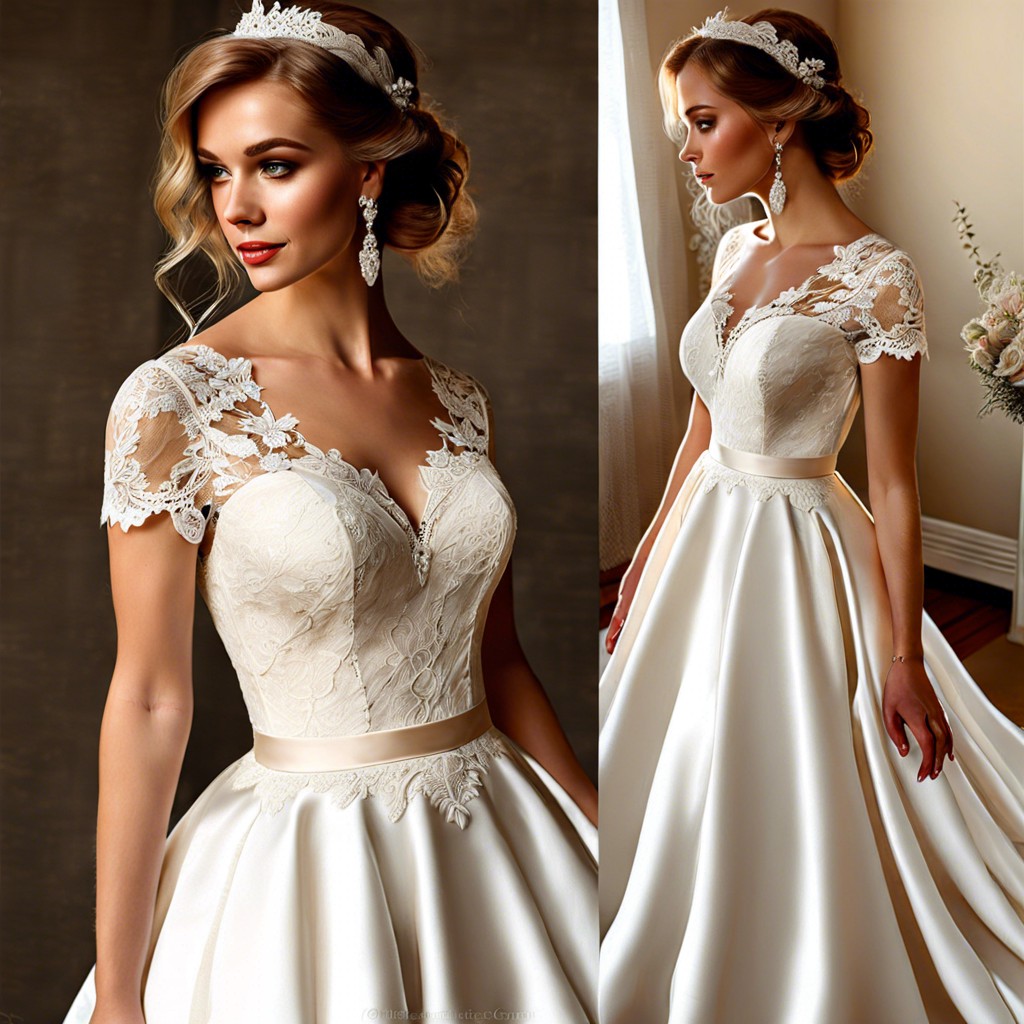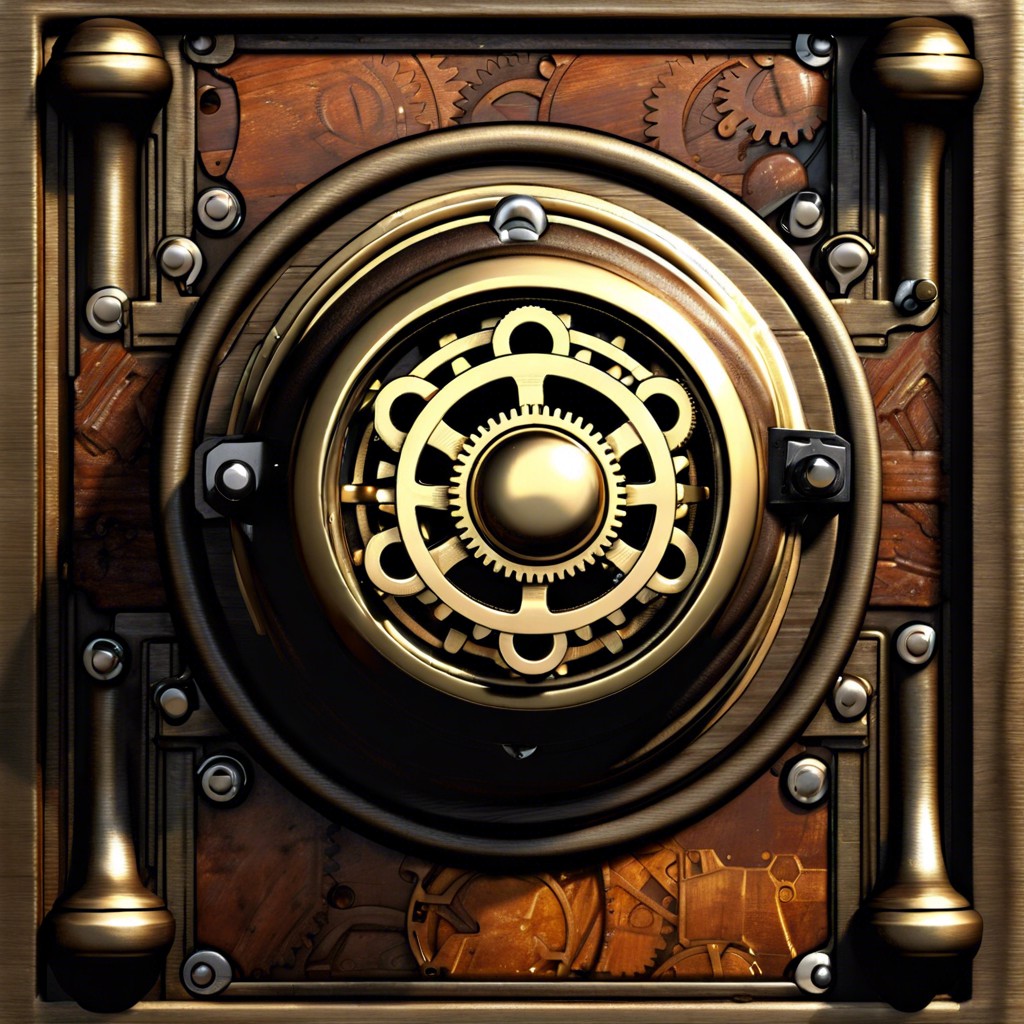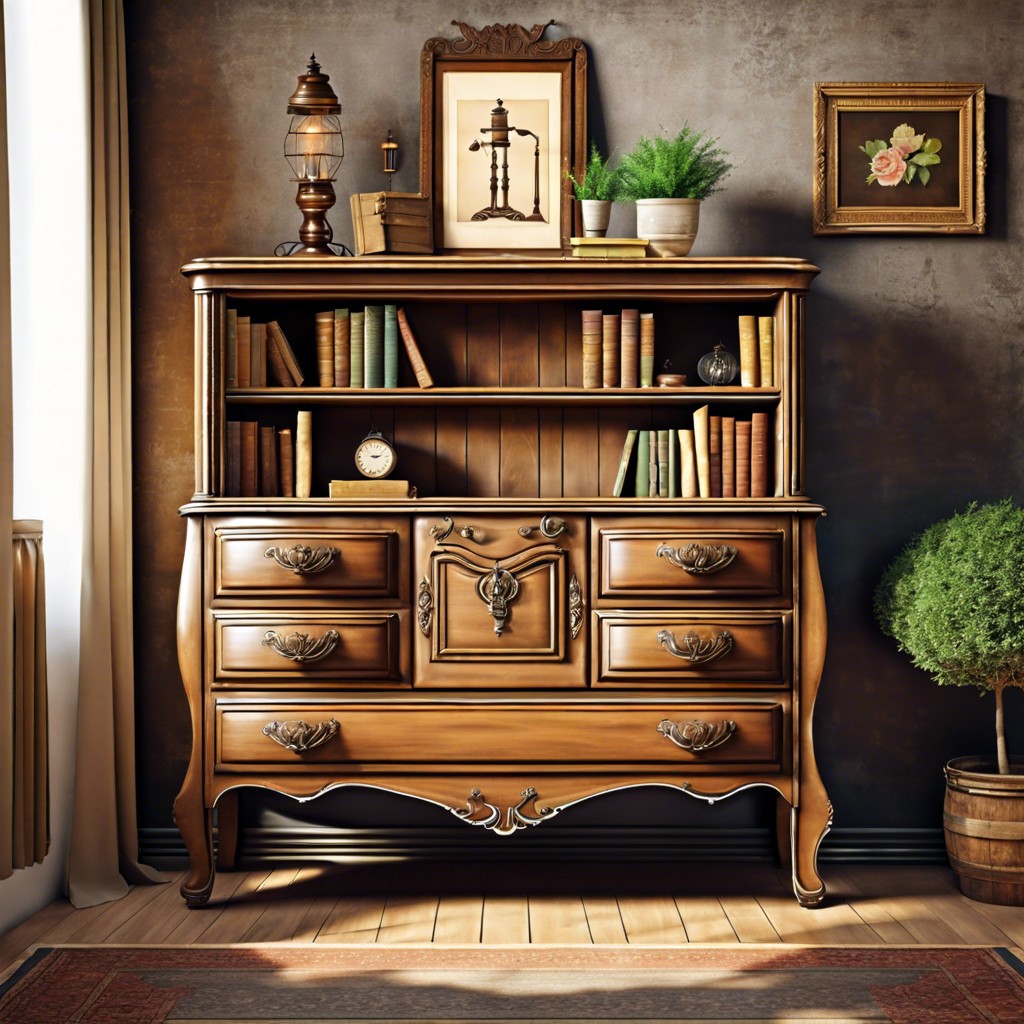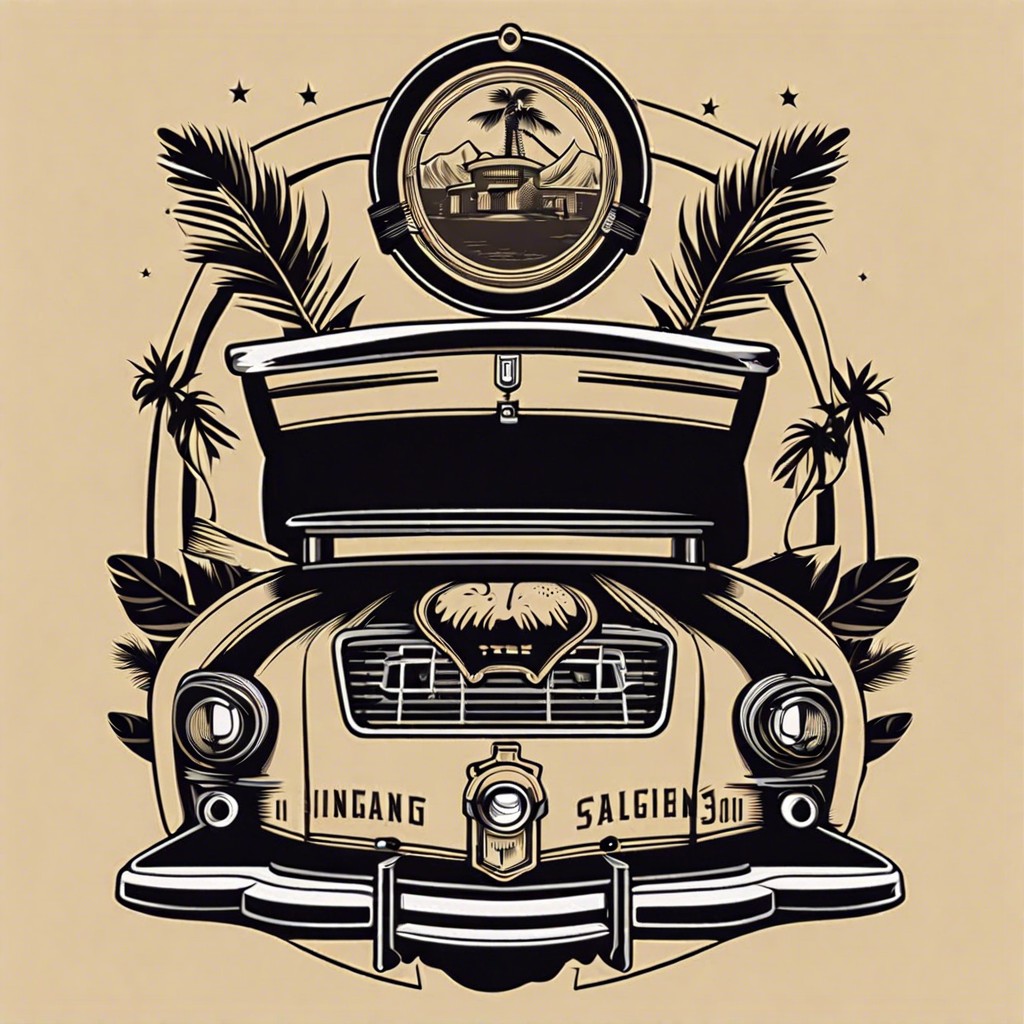Last updated on
Discover the charm and history behind vintage Christmas trees and how they continue to captivate holiday enthusiasts today.
Key takeaways:
- Vintage Christmas trees have a rich history spanning centuries.
- Different types of vintage trees include feather, aluminum, ceramic, and silver pine trees.
- Decorating styles vary depending on the era, with signature touches for each period.
- Preservation tips include handling with care, climate control, and regular inspections.
- Sourcing vintage trees can be done through flea markets, estate sales, online auctions, specialty shops, antique stores, and networking with fellow enthusiasts.
History of Vintage Christmas Trees
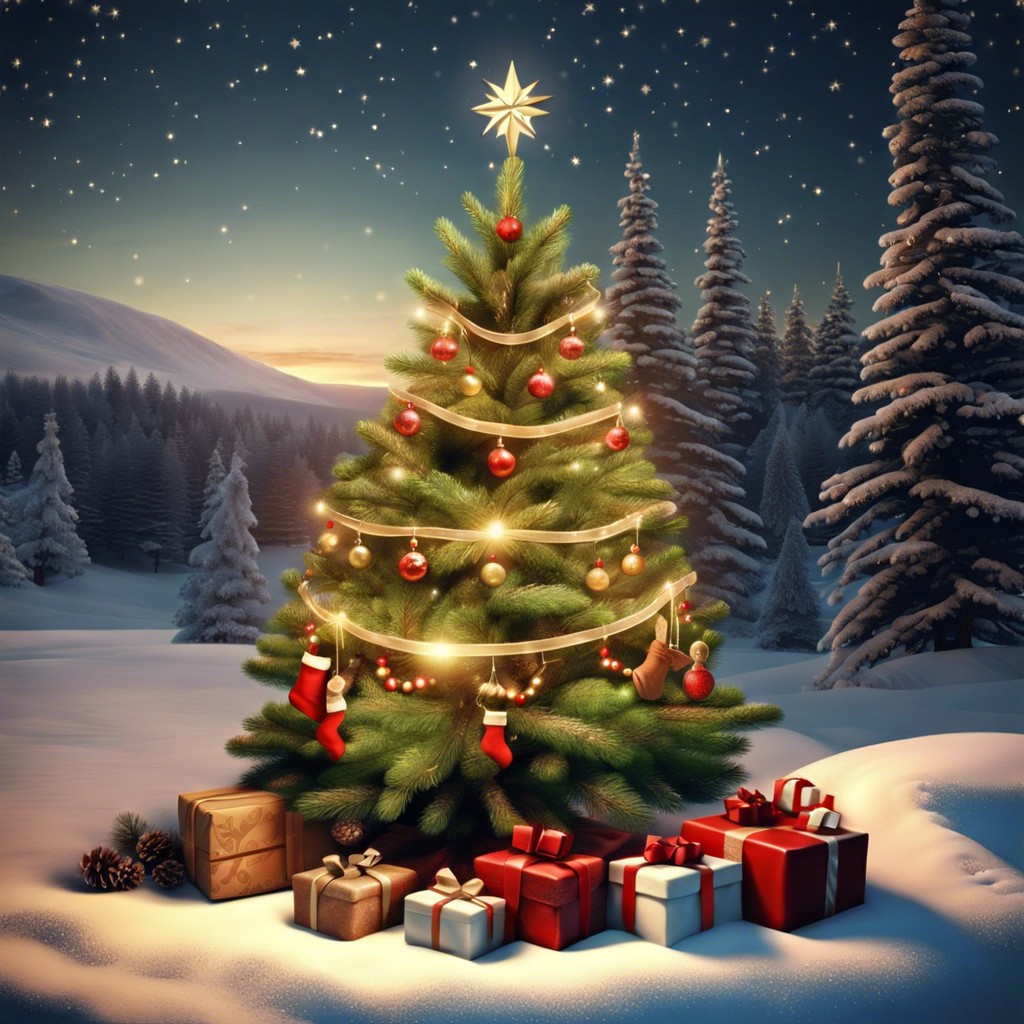
Christmas trees, originating from 16th-century Germany, exemplify time-honored traditions. Trimming the tree during the holiday season embraces customs that span over centuries. Initially, evergreens were adorned with simple decorations like fruits, nuts, and paper flowers.
By the Victorian era, Christmas trees began to take on a more elaborate appearance. Trees were embellished with candles, which later gave way to electric lights in the early 20th century. Handmade ornaments, often created from fabric scraps, lace, and ribbons, also graced these trees.
The post-World War II period saw a surge in commercially produced ornaments and artificial trees, reflecting a society bent on modern convenience yet still rooted in tradition. Aluminum Christmas trees from the 1950s and 1960s, complete with color wheel projectors, are iconic in this respect.
Each period’s tree style provides insight into the social fabric and cultural values of the time. Studying these vintage trees allows us to travel back in time and experience the simple yet profound joy that has lit up winters for generations.
Types of Vintage Christmas Trees
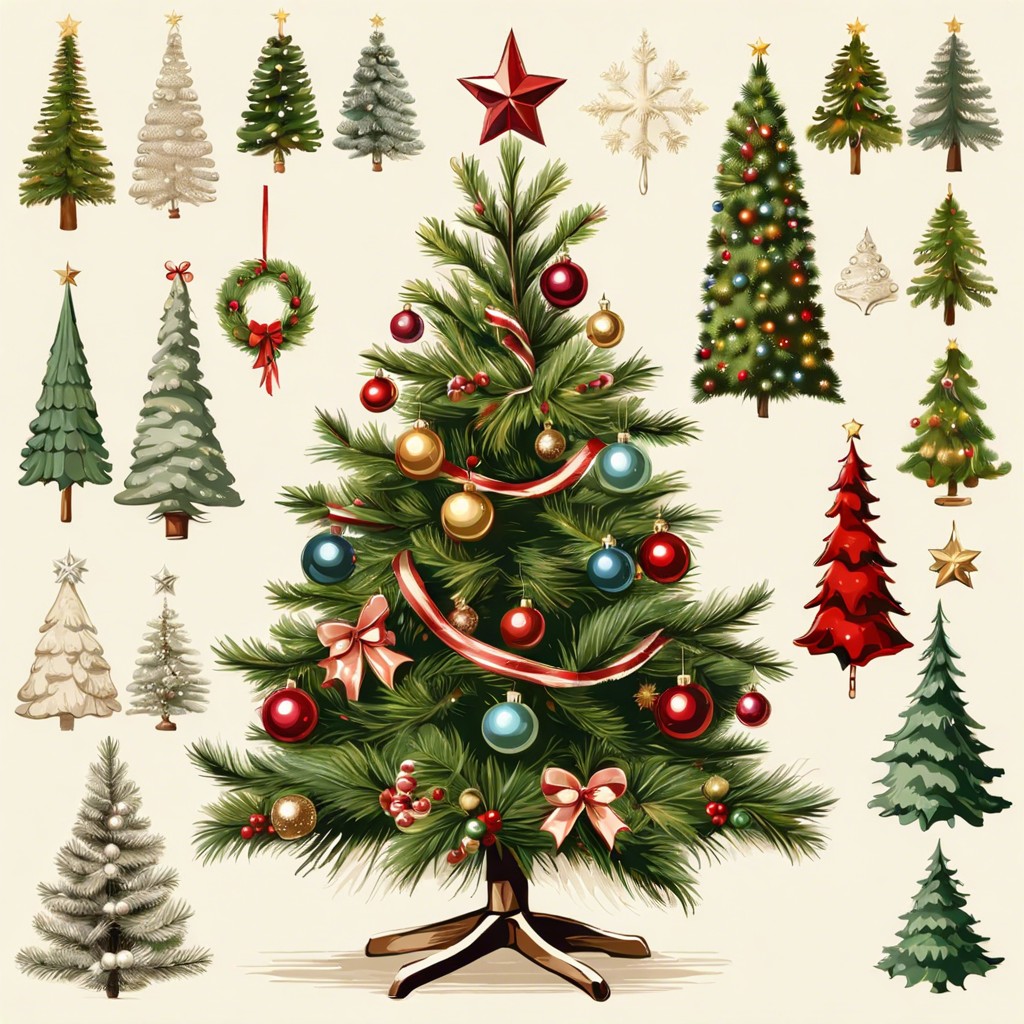
Feather trees, crafted in Germany as early as the 19th century, count among the first artificial Christmas trees. With real feathers dyed green and attached to wire branches, they offered a fire-resistant alternative to real evergreens. Aluminum Christmas trees, a mid-20th-century American fad, shone with metallic glamour and were often paired with color wheel spotlights for a futuristic vibe. Ceramic trees lit from within emerged in the same era, gracing tabletops with their hand-painted charm and twinkling plastic lights. Lastly, Silver Pine trees, made with vinyl needles, glistened like hoarfrost under the glow of Christmas lights, evoking a wintry forest scene without leaving the living room. These trees reflect our collective yuletides of yesteryear, and each carries a story in its branches.
Decoration Styles

Embellishing a vintage Christmas tree often reflects historical eras and their distinct aesthetic appeal. From the Victorian age with its intricate ornaments and candles to the mid-20th century’s tinsel and bubble lights, each period has signature touches.
Victorian decorations emphasized handmade crafts, including paper cornucopias filled with sweets, garlands of cranberries, and popcorn. These bespoke touches signified the era’s focus on craftsmanship. It wasn’t uncommon for trees to feature small gifts dangling among the boughs.
The early 1900s brought the advent of electricity, which revolutionized tree lighting. Glass ornaments from Germany, known as kugels, became highly prized for their reflective qualities, adding sparkle to the tree’s branches.
By the 1940s and 1950s, a new era’s influence was evident. Aluminum Christmas trees entered the scene, often accompanied by rotating color wheel lights. Shiny Brite ornaments, characterized by their bright, metallic colors and simple designs, became popular.
Traditionalists still favor the use of vintage decorations or their reproductions to create a nostalgic experience that hearkens back to yesteryear.
- When decorating a vintage tree, consider the following:
- Select ornaments from the desired historical period.
- Incorporate authentic materials from the time, such as tinsel, glass, or wood.
- Use lighting appropriate to the period, whether it be real candles or vintage-style string lights.
- Balance authenticity with safety, particularly when dealing with older electrical decorations.
Preservation Tips for Vintage Trees
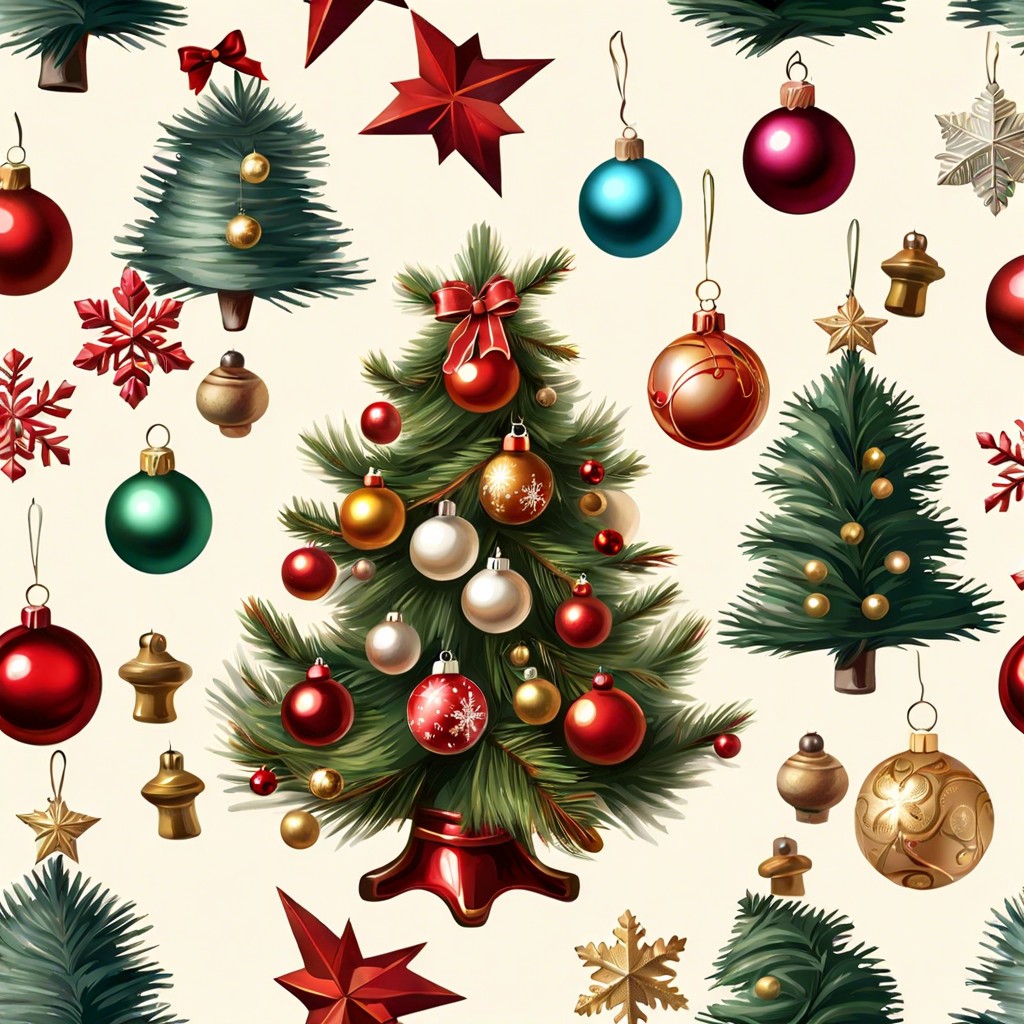
Caring for a vintage Christmas tree requires a gentle touch and some clever strategies. Sustaining its charm year after year can be as simple as following these guidelines:
Handle with care. When assembling or disassembling the tree, wear soft gloves to protect delicate needles and branch tips from natural oils and potential damage.
Climate control is crucial. Store your vintage tree in a cool, dry place to prevent colors from fading and materials from deteriorating. Avoid attics and basements where temperatures can fluctuate wildly.
Avoid over-embellishing. Heavy ornaments can strain old branches. Opt for lighter decorations that maintain the tree’s original appeal without adding undue stress.
Light it right. If your vintage tree is of the type that can safely accommodate lighting, choose low-heat LED lights to reduce the risk of heat damage.
Wrap it up. When not in use, wrap the tree in acid-free tissue paper or unbleached muslin to shield it from dust and pests.
Regular inspections go a long way. Check for signs of wear or damage before and after the holiday season. Promptly attending to minor issues can prevent more significant problems later.
Remember, tenderness and thoughtfulness in preservation let these relics of yesteryear brighten your festivities for many more years to come.
Sourcing Vintage Christmas Trees
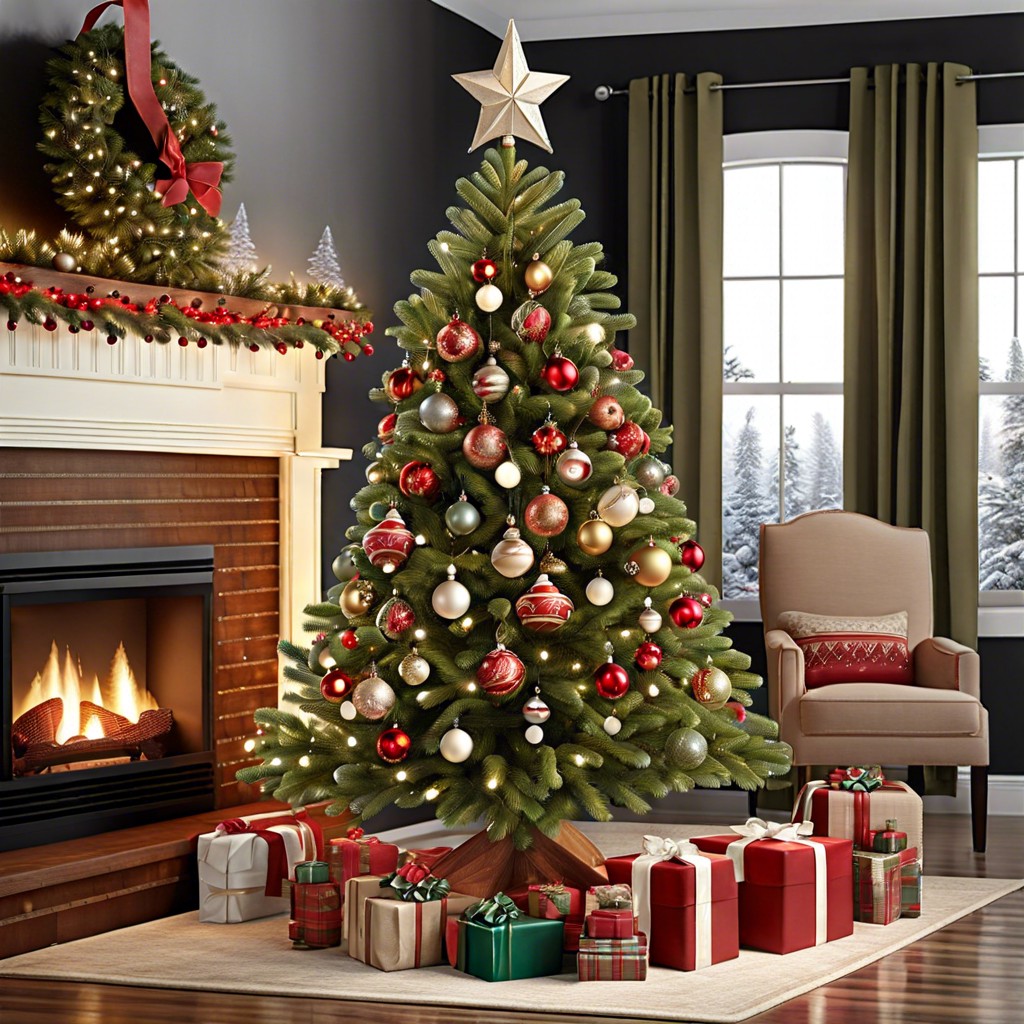
Scouring flea markets can be akin to a treasure hunt when you’re on the prowl for a vintage Christmas tree. Vendors often have rare finds, with stories as rich as their patina. Estate sales, too, are veritable gold mines where trees from Decembers past often lurk, awaiting their next home.
If you’re inclined to surf from the comfort of your armchair, online auctions and specialty shops are your best bet. They offer a wide array of options, from aluminum wonders of the 1960s to the charming feather trees that harken back to the 19th century.
Local antique shops can be hidden gems, boasting collections of yesteryear’s festive foliage. Friendly dialogue with shopkeepers can yield valuable leads, as they might source a tree if they don’t have one in stock. Additionally, Christmas-themed markets crop up seasonally, bringing a bounty of vintage holiday decor, including trees that have stood the test of time.
Networking with fellow enthusiasts through clubs or online forums can also be fruitful. Members often trade or sell their own collections, providing access to well-loved trees that carry a sense of nostalgia and warmth. Remember, patience and persistence often pay off in the quest for that perfect piece of holiday history.

